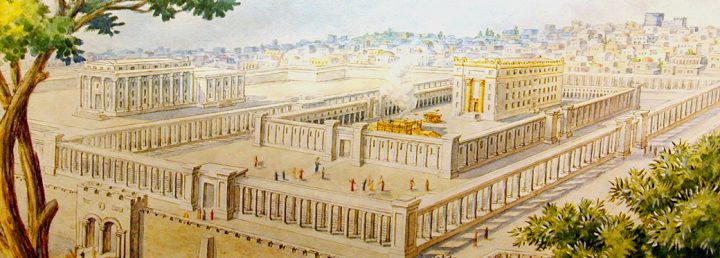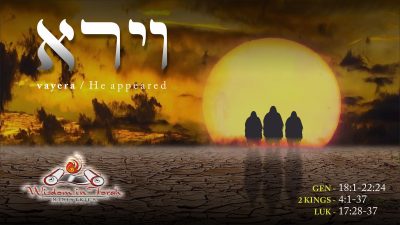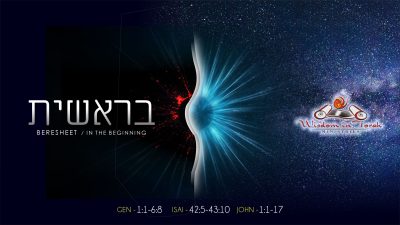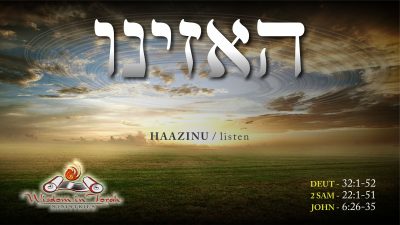2015 Israel’s bus teaching: “Korban” Sacrifices
Home » 2015 Israel’s bus teaching: “Korban” Sacrifices

Don't Forget to Share!
Teaching on Korban in Israel.
Be sure to check out the additional info tab
Audio
Oops, you don't have access to this content
Resources
The following is a list of recommended resources for this teaching:
- No additional resources at this time...
6.2.4 Repayment of a Debt
The distinctive feature of the ’āšām (אשׁם) in Lev. 5:14–6:7 [H 5:14–26] is that it denotes guilt with regard to holy things that had financial consequences.2 Little is said about the sacrifice, which indeed may be commuted (5:15), but reparation (the amount plus a fifth) is essential and must be rendered to the party defrauded (cf. Num. 5:5–10).3 Economic offences had cultic as well as legal consequences, and conversely, some cultic offences could be regarded from an economic point of view (Lev. 14:10–32; 19:21–22; Num. 6:12).4
The economics of sacrifice have broader implications. Factors of expense and means have probably influenced the laws in a number of ways. The material cost of purifications and sacrifices was graded according to the seriousness of the offence. This affected the type of animal (or otherwise) and how many were to be sacrificed. The greater resources of the community allowed a greater number of sacrifices to be offered during festivals than was possible for individuals (§7.2.2). At the other extreme, poor offerers were provided with cheaper alternatives (especially birds; e.g. after childbirth or skin disease, Lev. 12:8; 14:21). The more common major impurities were also subject to an economic accommodation to reality (§§5.4.2, 6.3.3).
In one case, even grain could be offered instead of an animal for a ḥaṭṭā’t (Lev. 5:11–13). This is sometimes regarded as qualifying the demand for a blood sacrifice for atonement and purification, but it may also be due to a competing principle which wins out. The necessity for even the poorest person to offer something took precedence over the symbolism (cf. Exod. 23:15; 34:20; Deut. 16:16–17). Milgrom has argued that the sacrifices graded according to means dealt with impurities or other offences which could not be avoided, including those which may have slipped the memory (Lev. 5:1–4).1 The ’āšām, on the other hand, concerned frauds and sins which would normally concern only the comparatively well off.2
6.2.5 Sharing a Meal
The distinctive character of the peace offering3 was the final stage of this sacrificial ritual, in which the flesh of the sacrifice was distributed to various parties, including the non-priestly offerer (§6.4.5). This was possible because it did not deal with with the faults of the offerer, and is never described as atoning, unlike the ḥaṭṭā’t and the ’āšām,4 It was accordingly a voluntary sacrifice, whereas the others could be required on various occasions. Whereas the ‘ōlâ law focuses on the burning of the animal, the ḥaṭṭā’t law on the blood manipulation, and the ’āšām law on the additional reparation, the šelāmîm law is concerned with the distribution of the parts of the sacrifice as food.
This sacrifice is commonly related to a communion or fellowship model, in which the parties involved in the sacrifice (i.e. God and the offerer) share in a meal and strengthen the bonds between them.5 While the etymological link between šelāmîm and šālôm (‘peace’) is uncertain, and ideas of ‘communion’ may be anachronistic,1 the use of the sacrifice for food is distinctive and significant. The nuanced distribution of the various parts of the sacrifice allow a ‘culinary sacrificial topology’ to be developed,2 which illuminates the grading in the personal dimension (§6.4.5).
The meal metaphor can illuminate aspects of other sacrifices as well. Just as a meal is consumed by human participants, so are the burnt parts of the sacrifice consumed by God. The ‘pleasing aroma’ (Lev. 3:5, 16, etc.) and incense (§4.5.3) may suggest good cooking, and some of the offerings are explicitly called ‘food’ (leḥem) for God.3 The different ways in which the minḥâ is cooked (Lev. 2:4–7) no doubt reflected the ordinary cooking techniques of the Israelite home.
However, the present text makes it clear that the model must be carefully qualified.4 Indeed, a number of scholars have argued that šelāmîm need have no association with a meal.5 Its etymology does not necessarily refer to the well-being or peace that follows a good meal. Despite these qualifications, this model should not be rejected completely.6 The positive symbolism (corporate harmony, physical blessing) can be retained, while the qualifications point to significant aspects of Yahweh’s character and the way that the model is limited. God does not enjoy food in the same sense as human beings do. He does not eat but smells the burnt portions, and the portions devoted to him (the fatty parts) are different from those which the Israelites are allowed (Lev. 3:17; 7:23–25).1 The turning of some or all of the sacrifice into smoke is an appropriate symbol of an immaterial God who dwells in heaven.2 The same contrast is found in minḥâ ritual, in which only a handful is burnt (Lev. 2:2), and this is called ‘the memorial offering’ (זכרון), a term which stresses the non-physical significance of the sacrifice.
The šelāmîm texts in P set out an animal grading (§6.4.4), but the choice was in all likelihood determined by different motives from the others. For a votive offering (נדר, Lev. 7:16), it is plausible to suppose that the animal chosen depended upon the nature of the vow and its response; for a thanksgiving (תודה, Lev. 7:12), the magnitude of the blessing; and for a freewill offering (נדבה, Lev. 7:16), the desire and capacity of the offerer to honour and praise God. The animal chosen would depend upon the wealth of the offerer and the character of the occasion on which it was offered.
6.2.6 Summary
Constructing models of sacrifice can be helpful, but any individual approach has its limitations. The various sacrifices exhibit similarities and differences. It is difficult to keep the models ‘pure’, and the failure of comprehensive theories of sacrifice highlight the differences between the types. None of the five models discussed is able to explain he system as a whole. However, one further model should be considered, since it is an extremely broad one, and fits in with the anthropological and structural perspectives introduced in Chapter 3.
This is the ‘order’ model, which has recently received a certain amount of attention (see further §8.3). Its application to the cult may be illustrated by the following two quotations.3
It follows from this world view [of P] that the purpose of the many cultic acts carried out in the temple was to maintain and, where necessary, reestablish this divine order. Sin was understood as a disturbance of that order, even when committed by inadvertence.
The primary question addressed in examining specific parts of the larger Priestly ritual system concerns the way in which the rituals relate to the foundation, maintenance, and restoration of the divinely created order.
The ‘negative’ sacrifices (the ḥaṭṭā’t and the ’āšām), are the means by which the divine order, disturbed by impurity or sin,1 is restored to an original harmony.2 A ‘fault’ in the order of things can be personal (sin) or impersonal (impurity), unavoidable or deliberate, individual or corporate. It need not be directly associated with the cult (cf. §6.2.4), since Yahweh guarantees the world-order and there are religious repercussions to unethical behaviour in society. The šelāmîm can also be assimilated to the model if they are regarded as reinforcing the value of the restored relation between God and man. They are the appropriate way to acknowledge positively God’s goodness and any particular benefits which an individual may have received from Yahweh’s hand.3
The model has considerable heuristic and theoretical interest, and provides a way to assimilate certain symbols, actions or words which cannot be assigned definitely to a more specific model.4 It points to the limited scope of the previous models, and stresses that the models are not to be understood in a narrow way. Yet in turn, the order model has weaknesses. Its very generality makes it difficult to relate the model directly to specific words and texts in the Priestly writing. If the models are a second order interpretation of the reality of sacrifice, then ‘order’ is one stage yet further removed.
It is in the light of these considerations that the value of an approach in terms of grading can be perceived. Grading is common to all the models, and so provides a key to understanding the system of Lev. 1–7 in its diversity as well as its unity. It also provides the link between the specific models and the general order model. It has particular relevance for the model of purification, which is not restricted to a narrow cultic focus. So before considering the grading of the sacrificial system in detail, the Priestly system of purification will be discussed.
2 Porter (1976: 44). A great deal of confusion arises because of the different meanings of אשׁם. According to context, it could refer to a sacrifice of reparation, the penalty for guilt, or the state of guilt (Milgrom 1976: 1–12; Kiuchi 1987: 31–34). אשׁם in Lev. 4:1–5:13 describes the guilt which follows sin (Lev. 4:13, 22, 27; 5:2–5), while in 5:6 it probably refers to the sacrifice (the חטאת) that must be brought as the penalty for guilt. The אשׁם sacrifice is thus quite distinct from the חטאת and is dealt with in a different passage.
3 The exception in Lev. 5:17–19 could be that because the defrauding is suspected, and no specific sums are concerned. The more severe penalties of the civil law (Exod. 22:6–8) were perhaps to encourage voluntary reparation (Milgrom 1976a: 114–15).
4 Milgrom (1976a). The precise rationale for offering the אשׁם is often uncertain.
1 Milgrom (1983b: 252). In contrast, the violation of a specific prohibition, even inadvertently, meant a fixed sacrifice (Lev. 4).
2 Others consider the fixed sacrifice to point to the seriousness of the offence (e.g. Wenham 1979b: 108).
3 The normal term in P is זבח שׁלמים (e.g. Lev. 3), but שׁלמים and זבח are sometimes found on their own. Rendtorff (1990a: 118–29) favours the suggestion that the double term refers to the public and cultic aspect of the more general term זבח. ‘Peace offering’ is a disputed and possibly incorrect translation. Alternatives include sacrifice of well-being (nrsv), shared-offering (neb), completion sacrifice (‘schlußopfer’, Rendtorff 1967:133) or community sacrifice (‘Gemeinschafts-Schlachtopfer’, Rendtorff 1990a: 125–26).
4 Milgrom (1983a: 153). At most, the blood manipulation considered in itself could be associated with atonement (Kiuchi 1987:103).
5 A model often associated with Robertson Smith (e.g. 1927:345).
1 ‘Communion’ can have unhelpful overtones of eucharistic theology or early anthropological theories of totemism.
2 The phrase is from de Heusch (1985). Cf. Thornton (1982).
3 E.g. ‘the bread of their God’ (לחם אלהיהם, Lev. 21:6), ‘food offered by fire to Yahweh’ (לחם אשׁה ליהוה, Lev. 3:11).
4 Kaufmann (1960:111–12). The symbolic character of the cult makes it unlikely that earlier forms of the rite were understood as crudely as has been suggested. In Mesopotamian religion elaborate meals were prepared for the gods, but they were not physically consumed (Oppenheim 1977: 191–93). A Babylonian priest would probably be as amused as an Israelite one at the literalism of Bel and the Dragon.
5 This facet is not stressed in P, though it is elsewhere (e.g. Exod. 12:8–10; 24:5). Porter (1976: 29–30) considers that it has lost this aspect in the Levitical system and instead represents more a gift that brings about ‘agreement’ or ‘reconciliation’. The ritual is similar to the other sacrifices, and so atonement rather than communion could be implied (the lack of a כפר reference could be accidental).
6 As it is by de Vaux (1961: 449–50). It is more than a ‘linguistic vestige’ (Milgrom 1971c: 70; cf. Eichrodt 1961: 143–44).
1 The structural contrast remains even if the Hebrews regarded the fat as the best and most desirable portion of an animal (Münderlein 1977:954). The point is emphasized by the complete consumption of the עלה, the principal sacrifice (§6.2.1). The reason why the blood must be poured out on the ground and not eaten (Lev. 3:17; 7:26–27) is probably different (Lev. 17:11).
2 One possible explanation of the term עלה is that it is the participle of עלה (to go up) and describes the ascending character of the smoke. However, it could also describe the smell, the fire, or the offerer’s ascent up to the altar (Kellermann 1987: 106; Rendtorff 1990a: 27 leaves the question open).
3 Blenkinsopp (1983:108), Gorman (1990:60).
1 ‘sin is whatever disrupts the proper order of things in a society where every facet of life is governed by the precepts of the divine law’ (Porter 1976: 11).
2 Brichto (1976: 27–28) considers that kpr refers to the restoration of an equilibrium when an imbalance between two parties occurs. From an anthropological perspective, de Heusch (1985: 215) discusses sacrifice in terms of ‘the metaphysical calculation of profit and loss’, an economic metaphor. Schenker (1981) also develops the ‘exchange’ model.
3 The עלה could even be understood as a sacrifice which acknowledges that God is the source of the cosmic order.
4 The order model may be of use in understanding Lev. 17:11. The general character of the verse makes it difficult to link it closely with any of the specific models set out in §6.2. Interpreters are forced to use very general concepts such as ransom, exchange, representation and substitution. Lev. 17:11 fits a general exchange model quite well, since it stresses the relation between sin-impurity and death, and suggests that the life in the sacrificial blood deals with this conjunction and gives life back to the offerer.
Jenson, P. P. (1992). Graded Holiness: A Key to the Priestly Conception of the World (Vol. 106, pp. 160–165). Sheffield, England: Sheffield Academic Press.
Rico Cortes
2 thoughts on “2015 Israel’s bus teaching: “Korban” Sacrifices”
Leave a Comment Cancel Reply
You must be logged in to post a comment.







It’s not a big deal, but would be real fun if you do this again next time, to tell us where the tour is heading and then teach.
Shalom
Good Idea I will do that next year.